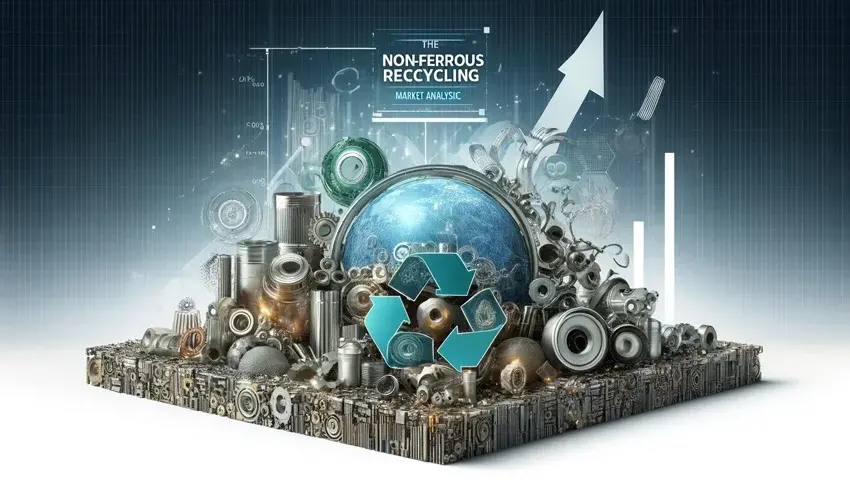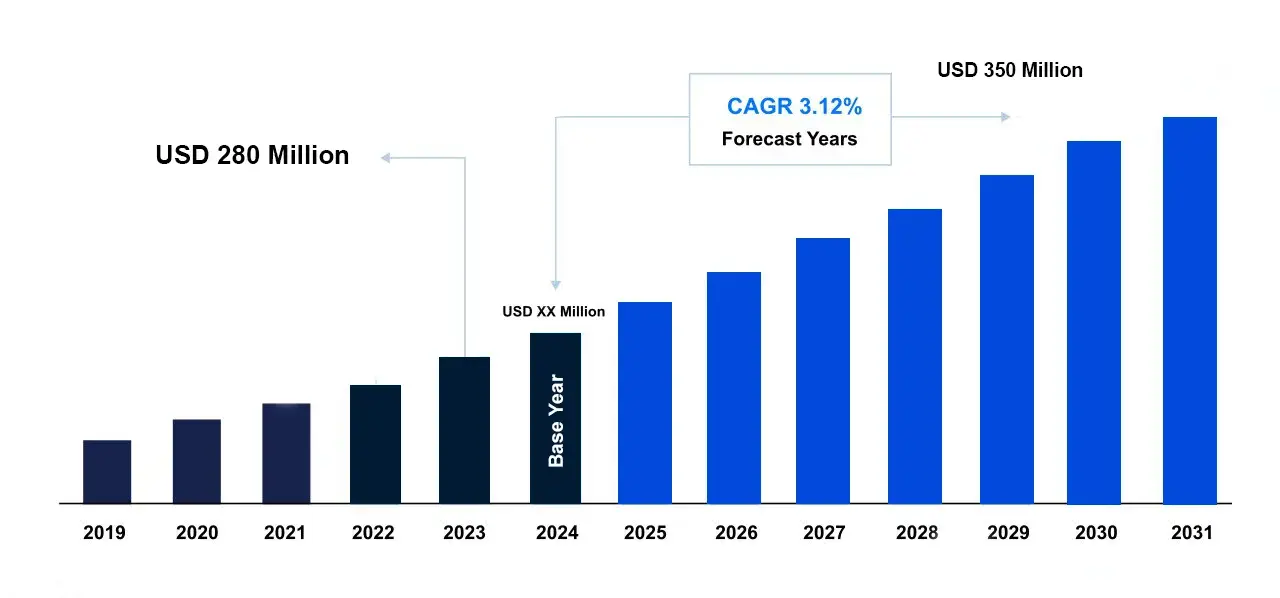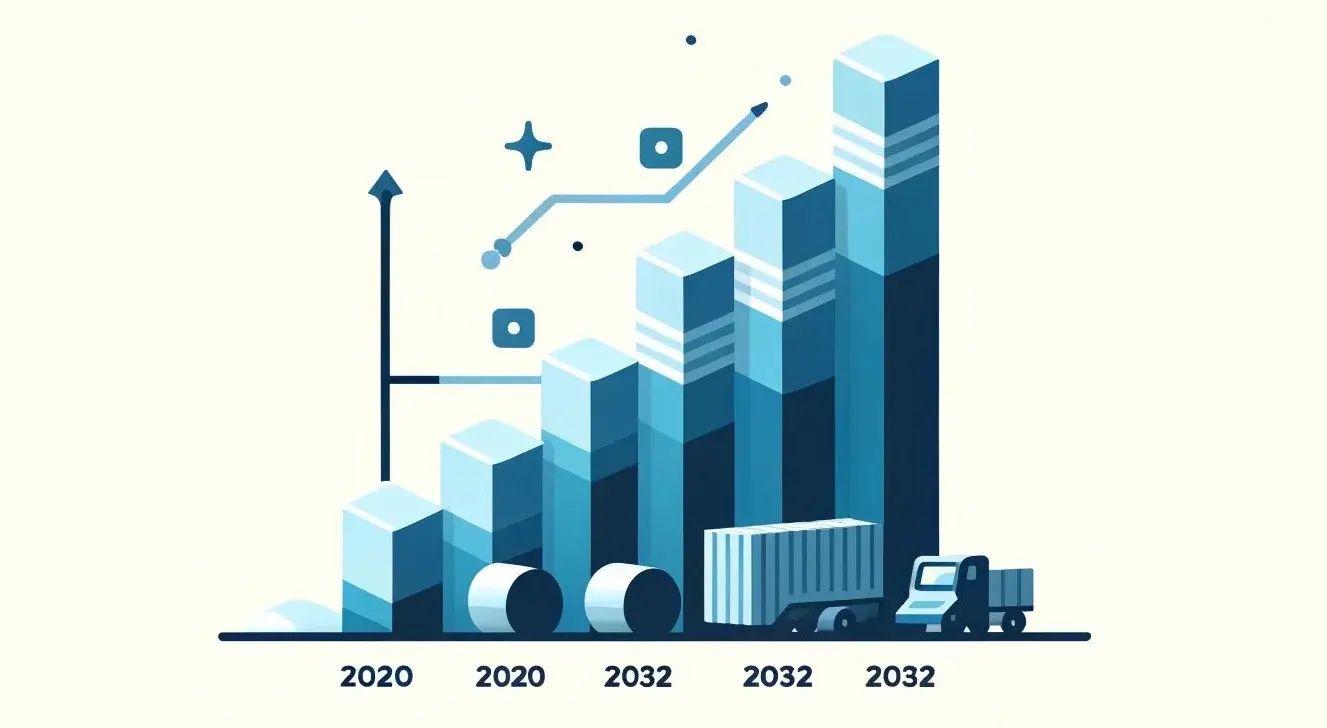
An Overview, Size, and Analysis for the Next 5 Years in the Non-Ferrous Metal Scrap Recycling Industry.
In this analytical overview, we delve into the scale and key growth trajectories of the metal scrap recycling industry, highlighting the distinctions between ferrous and non-ferrous metals. We dive deep into a sectoral analysis, encompassing construction, automotive industries, consumer goods, and industrial products, with a special focus on metals such as aluminum, copper, and lead. Furthermore, the study segments key regions from North America to Latin America, including Europe, Asia and the Pacific, as well as the Middle East and Africa, providing forecasts and expectations for the industry over the next five years.
The global market valuation for non-ferrous metal scrap recycling was just under USD 280 million in 2024 and is forecasted to reach USD 350 million within the next five years, with an annual growth rate of over 3% from 2024 to 2029. Non-ferrous metals have proven to be more valuable in the market compared to their ferrous and iron counterparts, thanks to the absence of iron as the primary alloying element. Their high value stems from several advantages: aluminum is known for its strength-to-weight ratio, copper for its high conductivity and malleability, and nickel and zinc for their excellent corrosion resistance. The ability to recycle these metals multiple times without losing their inherent qualities keeps lead, nickel, zinc, aluminum, and copper in high demand in the scrap market. The collection and recycling of these metals, from industrial waste to obsolete scrap, begin with their sorting and compaction into blocks of various sizes for ease of transportation and further processing.
The heightened public interest in environmental, economic, and energy conservation issues related to the recycling of non-ferrous metals is driving demand and market development. Aluminum, leading among the most recyclable resources due to its abundance in the Earth's crust, plays a pivotal role in the sustainable development of the industry, showcasing both economic and environmental benefits. Mirada Levante, leveraging its expertise and innovative approaches, contributes significantly to maximizing the recycling potential of these valuable metals.
In an era of renewable resources, Mirada Levante illuminates the path to a sustainable future through innovations in non-ferrous metal recycling.
Increased independent investments play a crucial role in expanding the global market for non-ferrous metal recycling. Metals including nickel, silver, copper, aluminum, and tin possess a unique ability for unlimited recycling without degradation of their primary qualities. This process not only promotes the prudent use of natural resources but also serves as a financially advantageous decision. Utilizing already extracted metals, particularly common ones like aluminum and copper, proves much more cost-effective than mining new ones. Thus, recycling becomes not just an environmentally responsible choice but also an economically viable strategy, highlighting the importance of reusing resources for the sustainable development of the economy. Mirada Levante stands at the forefront of this movement, championing the efficient reuse of metal resources to foster a greener and more sustainable industrial landscape.

Rapid urbanization, fueling government and private investment in housing construction and infrastructure development, stands as a pivotal growth factor for the non-ferrous metal recycling market. Metal recycling, which transforms metal waste into new products, directly contributes to the reduction of greenhouse gas emissions, conservation of natural resources, and efficient energy use. In industrially advanced countries, including Europe, the USA, and China, governments are actively supporting the metal recycling industry by implementing advanced collection, sorting, and recycling methods.
The acceleration of urbanization and industrialization, increased resource consumption, depletion of natural reserves, and the push towards material reuse open new horizons for the market, driving its expansion on a global scale.
The increasing demand for non-ferrous scrap metal within the realm of secondary manufacturing and across various end-use sectors is expected to contribute to market growth in the upcoming period. In response to the growing consumer needs, manufacturers are ramping up the production of electronics, automobiles, and other goods, subsequently boosting the demand for non-ferrous metals. Global industrialization also plays a significant role in heightening the need for non-ferrous metal scrap. Aluminum, copper, lead, nickel, and zinc, with their capacity for infinite recycling without degrading their essential properties, become particularly valuable in the secondary raw materials market. Factors such as growing public awareness of environmental protection, economic benefits, and the drive towards energy conservation are propelling the recycling market for these metals forward.
The surge in consumer interest has led manufacturers to significantly ramp up the production of electronics, automobiles, and other goods, responding to the growing demand. This, in turn, has boosted the need for non-ferrous metals, focusing attention on their collection and subsequent recycling amid global industrialization. Although non-ferrous metals constitute a smaller volume share in the industry compared to ferrous metals, their value share is considerably higher. This is attributed to the higher market prices of non-ferrous metals, serving as an additional incentive to concentrate efforts on secondary recycling to reduce production costs. Mirada Levante, leveraging these market dynamics, plays a pivotal role in enhancing the efficiency and sustainability of the recycling process.
High prices for non-ferrous metals encourage consumers to recycle old products, receiving fair compensation from scrap metal collection points. This contributes to a more active circulation of valuable resources such as aluminum and copper, supporting the sustainable development of the industry. Through its innovative recycling solutions, Mirada Levante is at the forefront of ensuring that these valuable materials are reintegrated into the economy, demonstrating its commitment to environmental sustainability and resource conservation.
In 2021, the Asia-Pacific region secured a leading position in the market by capturing a significant portion of total revenue, over 45%. Within this region, India stands out as a country with high growth potential in secondary recycling, despite challenges such as market unstructuredness and a lack of information. This leads to a significant amount of valuable raw material being diverted to landfills instead of recycling facilities. With a global recycling rate of around 45%, India's rate barely reaches 25%, underscoring the immense untapped potential. The automotive and energy sectors significantly contribute to the country's total aluminum scrap volume, which amounts to about 120 kilotons.
North America also demonstrated impressive results, owning more than 20% of the global market in 2021. The leading role in the region belongs to the USA, where the waste recycling industry is actively developing. Non-ferrous scrap accounts for about half of the total value of all recycled materials, with the country acting as a major importer and exporter of aluminum scrap, as well as one of the leaders in the production of secondary aluminum.
Europe secured the second largest share of market revenue, thanks to technological innovations in recycling.

In 2021, the construction sector emerged as a market leader, accounting for more than 38% of revenues. The collection of non-ferrous scrap spans a wide range of industries, including construction, automotive, consumer goods, and industrial products. In construction, non-ferrous metals such as copper from piping, aluminum from windows and doors, and zinc from roofing materials represent just a fraction of the collected scrap. Despite its impressive share, the growth rate of construction is expected to yield to other sectors due to the durability of materials and the extended lifespan of structures. However, thanks to industrial development, infrastructure projects, and an increase in the use of non-ferrous metals, the construction sector will maintain its leading position.
Consumer goods, particularly household appliances and electronics with their limited lifespans, are set to lead growth due to increasing focus on secondary recycling. Copper pipes from refrigerators and other appliances highlight the importance of recycling in resource conservation.
Aluminum continued its dominance in the market in 2021, capturing a significant share. Demand for recycled aluminum, especially from the construction and automotive industries, has significantly increased, pushing the industry forward. Interestingly, India has experienced a surge in demand for recycled aluminum, underscoring its role in the resource-saving economy.
Copper, as one of the most valuable non-ferrous metals, finds widespread use in electrical engineering and construction due to its conductivity. From electrical cables to components, a large portion of the copper used is recycled back into use. Lead also stands out for its high recycling level, emphasizing the value of secondary raw materials for sustainable development.
Non-ferrous metals are metals that do not contain iron as their main component. They include aluminum, copper, lead, nickel, and zinc. Recycling these metals is crucial due to their ability to retain original properties through multiple recycling processes, which helps reduce greenhouse gas emissions, conserve natural resources, and save energy.
Key drivers include rapid urbanization, increased consumption and production of electronics and vehicles, and heightened public awareness of environmental issues and energy conservation. Support from governments of developed countries also plays a significant role.
In 2021, the Asia-Pacific region, particularly India, led the market, showing significant growth potential in secondary recycling. North America, with a focus on the USA, and Europe also demonstrated substantial results thanks to their innovative recycling technologies.
Recycling non-ferrous metals reduces the need for mining new resources, decreases energy consumption and greenhouse gas emissions, supports sustainable resource use, and offers economic benefits by lowering production costs.
Mirada Levante holds a key position in the market due to its innovative approach to non-ferrous metal recycling, commitment to sustainability, and adoption of advanced technologies. The company actively participates in developing infrastructure for efficient scrap collection and recycling, contributing to environmental protection and economic efficiency.
Major challenges include market unstructuredness in certain regions, a lack of information about recycling processes and technologies, and the need for improved collection and recycling infrastructure. Mirada Levante is actively addressing these obstacles by implementing educational programs and collaborating with local communities to increase awareness of the importance of recycling.